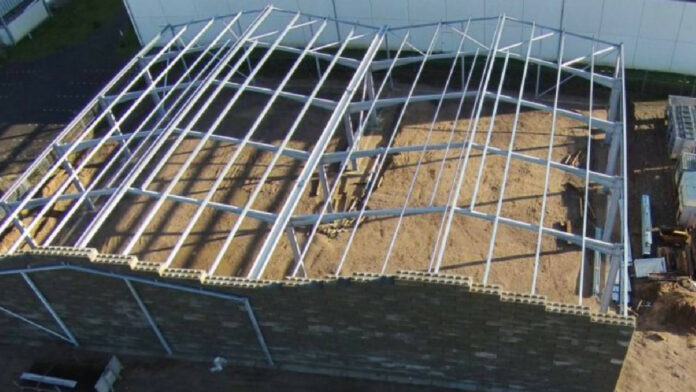Carbon-eating blocks are now being manufactured for carbon reduction to achieve sustainable carbon footprint. The construction industry is considered to be among the major sectors that contribute significantly toward the emission of GHGs in our environment, which have a major effect on the climate change, and is approximately responsible for about 19 percent of the overall GHG emission globally, rendering it a pollution hotspot requiring urgent mitigation measures to achieve carbon footprint.
According to the 2021 Global Status Report for Buildings and Construction published by the UN Environment Programme (UNEP)-hosted Global Alliance for Buildings and Construction the sector accounted for 36 per cent of global final energy consumption. It is predicted that it could reach up to 15.6 billion t-CO2-e by 2030, creating an increase of 26% CO2 which accounts for 30–40% of the total GHG emissions
What is carbon footprint?
A carbon footprint is the total amount of greenhouse gases (including carbon dioxide and methane) that are generated by our actions.
All over the world, governments, industries and corporations look to 2050 as the year to achieve carbon neutrality. More specifically, carbon neutrality is top-of-mind for many in the construction industry. And that’s good, since, according to the World Economic Forum, it accounts for 38% of global emissions.Carbon Recycling, which recasts the role of carbon dioxide as a resource to be put to good use, has been adopted across the globe for realizing its goal of carbon neutrality.
In this regard, A Limburg (Netherlands) company called Masterbloc has engineered Carbon-eating blocks that can ingest eight tonnes of CO2 a day It is an eco-friendly carbon eating block from steel slag left over from the steel industry. The carbon-negative concrete blocks absorb more CO2 during production than they emit.
Carbon-eating blocks features
At the company’s factory, some 8- tonnes of CO2-ingesting building blocks are produced per day. This roughly accounts for a yearly output of 15,000 tonnes. The company CEO Bjorn Gubbels claims the block stores CO2 and can help boost the circular economy.
“There are all kinds of stacking blocks on the market, and they all look very similar, however, Masterbloc is different to other stacking blocks. We return to the days when stacking blocks was child’s play. Indeed, this is exactly the principle that we apply in the real world,” claims Masterbloc.
The technology for Masterbloc has been developed by Genk-based recycling company Orbix, which has been processing steel slag from stainless steel producer Aperam since 1996.

It all began in 2004, when Orbix’s research and development manager Dirk Van Mechelen discovered that steel slag residue was hardening after exposure to CO2. Working with researchers from the Flemish Institute for Technological Research (VITO), the technology was further developed in 2011, resulting in the “Crabstone” process.
“Carbstone has numerous advantages,” Serge Celis, CEO of Orbix, says. “Thanks to Carbstone, we convert metal slag into a high-quality circular product and since CO2 is used as a binder, we avoid using cement, which accounts for 10% of global CO2 emissions.”
Better yet, Masterbloc blocks have the same quality as conventional blocks making the technology increasingly popular with companies seeking to reduce their CO2 emissions. In addition, by using CO2 as a binder, construction companies are no longer dependent on cement prices.
The company has ambitious plans to rapidly expand the production of building materials in the coming years. The new production process will be presented to Flemish Minister Zuhal Demir in December.
Decarbonizing the buildings sector by 2050 is critical to delivering these cuts. To reduce overall emissions, the sector must improve building energy performance, decrease building materials’ carbon footprint, multiply policy commitments alongside action and increase investment in energy efficiency. Embodied carbon in buildings – the emissions associated with materials and construction processes – needs to be tackled to avoid undermining energy-saving measures

